If you’re the owner of a house with a grassy and clean front lawn, and you would like to keep it like that, it’s best for you to purchase a lawn mower of your own instead of borrowing your neighbor’s one.
We believe that a lawn mower is more precise and effective when it’s bought specifically for your own personalized lawn.
However, before buying one for yourself, it’s best to know about the types of lawn mower engines available in the market.
This article will help you find the lawn mower and engine best suited to keep your front lawn as clean as the day you moved in!
Types of Lawn Mowers
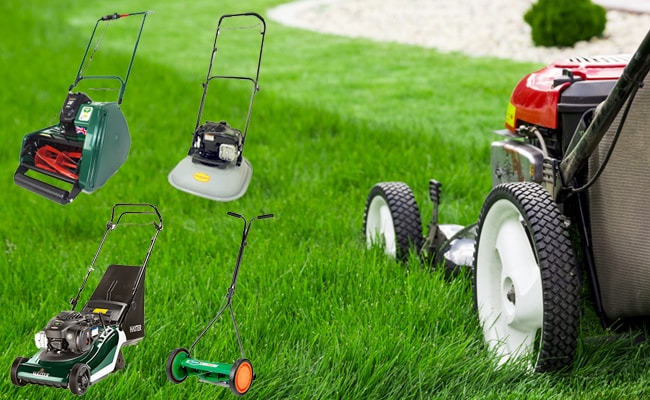
In order to understand the types of lawn mower engines, the types of lawn mowers available are rotary mowers, riding lawn mowers, and cylindrical mowers.
However, the engines are usually classified by two-cylinder, four-cylinder engines, and electrical engines. There are also two-stroke and four-stroke engines, and each stroke completes half a rotation.
Different Types of Lawn Mower Engines
1. Two-Cylinder Engines
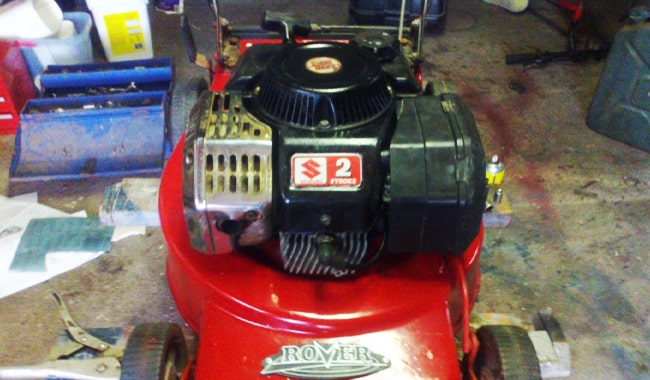
Rotary mowers are classified by the blade that rotates on a vertical axis. These mowers usually function as you push it along the grass to trim it.
However, the types of lawn mower engines are specified by two-cylinder and four-cylinder engines.
While two-cylinder engines are much less Eco-friendly and efficient, they’re perfect for a clean trim on your front lawns. They tend to be the best option for smaller projects due to the fuel intake.
Two-cylinder engines usually require a mixture of fuel and oil.
The ratio of fuel to oil [To know more about oil mix ratio, Click Here] must be accurate to help lubricate the engine during combustion. Rotary mowers can come in both two-stroke or four-stroke combustion engines.
And the two-stroke engines work by compressing the fuel during the upward stroke, while the spark plug ignites and intakes while releasing the exhaust during the downward stroke.
This only requires two strokes as each rotation makes one explosion. Rotary mowers are usually for smaller fields, as the engine runs on two to seven horsepower.
A two-cylinder lawn mower is usually much less expensive and lighter. But it often doesn’t provide the most even trim and usually are significantly louder than most other residential lawn mowers.
If maneuvering your mower and working at an angle or slope is a difficult task for you to bear, then the two-cylinder engine is recommended.
2. Four-Cylinder Engines
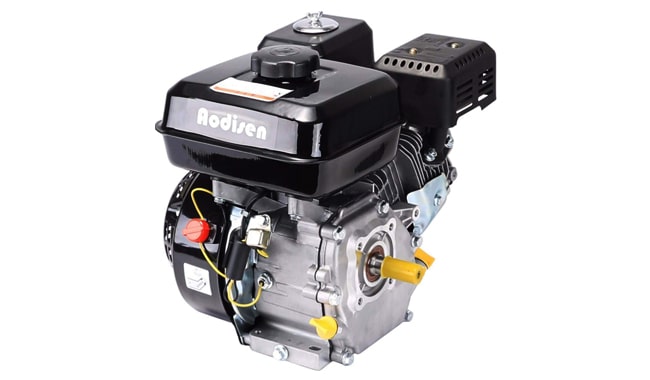
Riding lawn mowers are usually best for commercial use, as it carries around 13 to 30 horsepower and its much stronger and heavier in comparison to rotary mowers.
These are usually powered by four-cylinder engines, as it is intended for a much longer and efficient combustion power.
They often take up to four-strokes for intake, combustion, compression, and exhaust.
Four-cylinder engines require unleaded gasoline, and the oil and fuel are kept separated as there is a tank for both oil and fuel.
The gasoline has to have less than 10% ethanol for it to work. Four-cylinder engines are considered eco-friendlier as it uses less ethanol in the process, and oil change is required less often.
Riding lawn mowers can have the engine situated in the back or in the front. Front engines are usually considered to be way more powerful than the back engines, but visibility can cause a problem in a commercial area.
Since four-cylinder engines are usually rather large and heavy, maneuvering it is often quite a task. So, visibility is always an important aspect to consider when buying these.
Although a four-cylinder mower isn’t an economical choice due to its requirement for tune-ups, accessories, and oil changes. But it’s certainly the most reliable choice available.
If you’re looking to work on a complex project set for commercial fields, taking up most of your day. Then acquire a four-cylinder engine for a seamless and stress-free project.
3. Electrical Engines
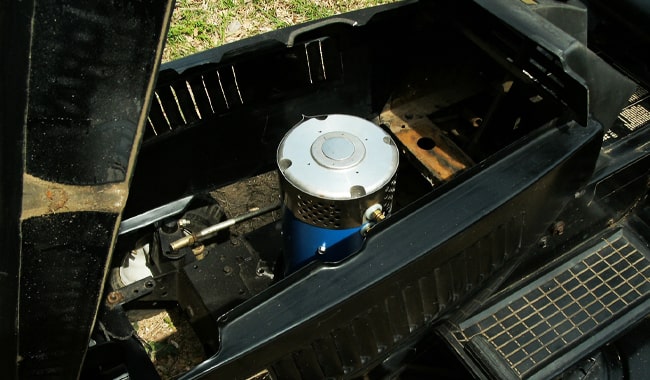
Electrical engines for lawn mowers come with its fair share of advantages and disadvantages. But it mostly depends on the foliage you’re trying to manage under which climate.
Electrical engines usually come in both corded and cordless mowers. And it’s best for a cooler climate featuring less rough grass and foliage.
If you’re looking for a lawn mower for weekly trimming on your personalized lawn, then this would be the perfect choice to meet those conditions.
However, it comes at a disadvantage when dealing with a warmer climate, as the engine doesn’t carry enough horsepower to plow through harsh foliage. In such cases, it would be wise to upgrade to a two-cylinder.
Electric engines do have their major advantages as well, as it’s the most environmentally friendly choice in the market.
It’s also cheaper in the longer run, as it doesn’t require an oil change, gas, or tune-ups. And it’s also significantly less loud than gasoline-powered engines, which is perfect if you live in a quiet neighborhood.
Due to its range limitations, electric engines are usually not preferred by some homeowners. A corded mower usually is unable to reach all parts of the lawn, as your house might not come with several outdoor outlets.
And cordless mowers run out of charge rather quickly and charging takes up to 12 to about 24 hours.
[On a side note, To know more details about the difference between corded and cordless lawn mower, Read This]
Maintenance cost is often not even required for an electric mower, as it only requires a new battery every five to seven years.
All in All
Owning and operating your own lawn mower under good conditions is often a tedious task due to the regular maintenance and care required.
However, equipping yourself with opt knowledge about the machinations of your lawn mower engine is a large part of the process. As some of the maintenance required for your engine, be damaging for another.
Store your mower in a dry place, and drain the fuel during winter to avoid aging. Grass and debris from the undercarriage must be washed, unless it’s an electrical mower as it can have exposed wires.
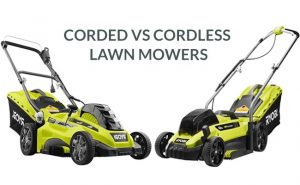
Corded Vs Cordless Lawn Mowers
Traditional gas-fueled lawn mowers are not so popular in the modern markets. Today, more and more people are choosing electric mowers because they are cheaper
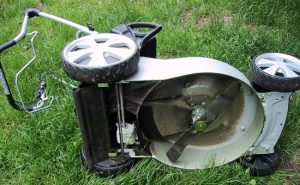
Know When to Use Mulching Blades and Why!
If you have a garden and you are looking for ways to cut the grass efficiently, mulching is the best technique to go for. Not
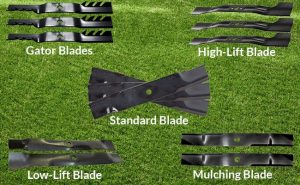
Different Types Of Lawn Mower Blades Explained
Lawn mowers are essential for any house owner, who wants to keep a properly maintained yard. Just like trimming your hair, a precisely cut lawn
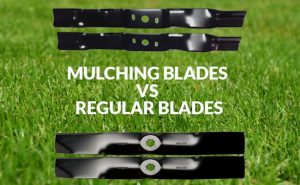
Mulching Blades vs Regular Blades – Compared in Detail
If you have a lawn mower, you will agree with the fact that the performance of this machine is dependent on multiple standards. One of
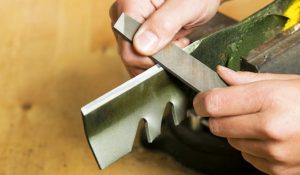
How Often Should Lawn Mower Blades Be Sharpened or Replaced
A sharp lawn mower blade cuts grass very efficiently while saving both time and effort. The blade cuts grass cleanly and allows the grass to
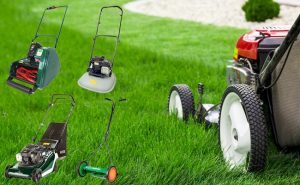
Different Types of Lawn Mowers Explained!
Having a wrong mower for your lawn will not only ruin your physical effort, but your mood will also be destroyed along with that. Imagine
